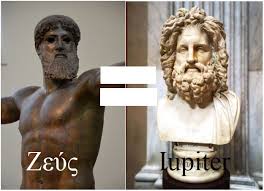By Michael Nyavi (Sir Michael)
The rise of Christianity in the first century CE took place within the broader context of the Greco-Roman world. This world was characterized by a rich religious environment that included traditional polytheism, philosophy, emperor worship, and the Mystery Religions or cults. These Greco-Roman cults, such as the cults of Mithras, Isis, Cybele, and Dionysus, were widespread in the Roman Empire and often provided a spiritual and communal experience for their adherents. While Christianity was distinct in its central message of salvation through Jesus Christ, several resemblances can be observed between Christianity and these Greco-Roman cults, particularly in structure, ritual, and religious experience.
1. Shared Religious Atmosphere
The Greco-Roman world was religiously pluralistic. People often participated in multiple cults and rituals without conflict. Christianity entered this environment and, while it claimed exclusivity, it inevitably engaged with familiar religious forms. For example, both Christianity and the Greco-Roman cults emphasized personal religious experience, spiritual renewal, and the promise of life after death. This overlap made Christianity more comprehensible to people in the Roman Empire.
2. Initiation and Rituals
Mystery cults were known for their secretive initiation ceremonies, which admitted believers into an inner circle of sacred knowledge. Similarly, Christianity had the sacrament of baptism, through which new converts were initiated into the faith. Both practices symbolized purification, rebirth, and belonging to a sacred community.
Additionally, the communal meal was central to many cults, such as the Mithraic feasts, and paralleled the Christian Eucharist (the Lord’s Supper). Both symbolized unity, divine fellowship, and a deeper connection to the god or savior figure.
3. Salvation and Eternal Life
A defining feature of the Greco-Roman cults was their emphasis on salvation and immortality. The cult of Isis promised protection and eternal life, while Mithraism emphasized triumph over death and darkness. Early Christianity also proclaimed salvation and eternal life through Christ’s resurrection. This similarity in themes of victory over death and the hope of immortality resonated with people familiar with the promises of the cults.
4. Savior Figures and Mythic Narratives
Many cults centered around a divine or semi-divine savior figure. For instance, the cult of Dionysus revolved around the death and rebirth of the god, while Mithras was viewed as a heroic savior who conquered evil. Early Christianity also centered on a savior figure, Jesus Christ, whose death and resurrection secured salvation for humanity. While the Christian narrative was rooted in Jewish tradition, its structure bore resemblance to Greco-Roman mythic patterns that emphasized redemption through suffering and victory.
5. Community and Brotherhood
The Greco-Roman cults created close-knit communities, often described as brotherhoods, where members shared meals, rituals, and mutual support. Early Christian churches also emphasized fellowship, calling themselves the “body of Christ” and practicing communal life. This sense of belonging and mutual care was a key resemblance and one of Christianity’s most attractive features in the Roman world.
6. Ethical Transformation
While many Greco-Roman cults emphasized ritual rather than morality, some, like the cult of Isis, encouraged ethical living and loyalty. Christianity also emphasized moral transformation, urging believers to live holy lives, love one another, and reject sinful practices. The ethical dimension of Christianity, however, was more pronounced and universal than in the cults, but the shared expectation of transformation provided a point of resemblance.
Conclusion
The Greco-Roman cults and early Christianity were not identical, yet they bore important resemblances in ritual, symbolism, and religious experience. Both offered initiation rites, communal meals, promises of salvation, and the presence of a savior figure. These similarities made Christianity more accessible in the Roman Empire, but Christianity distinguished itself by its exclusive devotion to one God, its strong ethical demands, and its historical grounding in the life, death, and resurrection of Jesus Christ. The resemblances show how Christianity both engaged with and transcended the religious culture of its time, eventually emerging as a dominant faith within the Roman world.
References
- Ferguson, Everett. Backgrounds of Early Christianity. Wm. B. Eerdmans, 2003.
- Burkert, Walter. Ancient Mystery Cults. Harvard University Press, 1987.
- Lane Fox, Robin. Pagans and Christians. Penguin Books, 1987.
- Grant, Robert M. Early Christianity and Society. Harper & Row, 1977.



